
Research Article
J Bacteriol Mycol. 2018; 5(2): 1066.
Prevalence of Urinary Tract Pathogens and Antimicrobial Resistance Patterns in Children Aged 1 to 12 Years
Batabyal B1* and Himanshu2
¹Research Scholar, OPJS University, Churu, Rajasthan, India
²Department of Microbiology, Associate Professor, OPJS University, Churu, Rajasthan, India
*Corresponding author: Batabyal B, Research Scholar, OPJS University, Churu, Rajasthan, India
Received: March 26, 2018; Accepted: April 19, 2018; Published: April 26, 2018
Abstract
Background: Urinary tract infections (UTIs) are counted among the most common infections in children. Most commonly, members of Enterobactericeae, particularly urinary pathogenic strains of Esch. coli and Enterobacter aerogenes are the primary causative organisms of UTIs in different parts of the world. In spite of the availability and use of the antimicrobial drugs, UTIs caused by bacteria have been showing increasing trends. Antibiotics are a mainstay in the treatment of bacterial infections, though their use is a primary risk factor for the development of antibiotic resistance. Antibiotic resistance is a growing problem in pediatric urology as demonstrated by increased urinary pathogen resistance. The extensive and inappropriate use of antimicrobial agents has invariably resulted in the development of antibiotic resistance which, in recent years, has become a major problem worldwide. Increasing antibiotic resistance among urinary pathogens to commonly prescribed drugs has become a global reality today. Complex pediatric patients with histories of hospitalizations, prior antibiotic exposure, and recurrent UTIs are also at high risk for acquiring UTIs due to extended spectrum beta-lactamase [ESBL] producing organisms. Data regarding the impact of in vitro antibiotic susceptibility testing interpretation on UTI treatment outcomes is lacking. The resistance of bacteria causing urinary tract infection (UTI) to commonly prescribed antibiotics is increasing both in developing as well as in developed countries. Resistance has emerged even to more potent antimicrobial agents.
Objective: To determine the prevalence and to find out the causative agents of UTI and their antibiotic resistance pattern among suspected UTI patients in children.
Methodology & Results: A total of 512 urine samples were collected from out patients of age between 1 to 12 years of both sex of children at Serum Analysis Center Pvt. Ltd. [Referral Laboratory]; Howrah; West Bengal; India between December 2016 to November 2017. The urine samples were cultured on HiCrome UTI Agra media and Eosin Methylene Blue Agar media [EMB] and the bacterial isolates were identified by gram staining and conventional biochemical methods. Antimicrobial susceptibility testing was performed by Kirby Bauer disk diffusion method according to the current National Committee for Clinical Laboratory Standards (NCCLS) guidelines.
Among the 512 urine samples examined [1 to 12 years of children], included 276 (54.0%) in Male child & 236 (46.0%) in Female child and 220 (42.9%) of urinary pathogens are isolated. The bacteria were isolates 104 (37.7%) of male child and 116 (49.2%) of female child. In patient of male child, 50% of Esch. coli, 34.6% of Klebsiella pneumoniae, 15.4% of others gram negative bacilli and 52.0% Extended- spectrum Beta lactamase [ESBL] stains were isolates. In patient of female child, 72.4% of Esch. coli, 20.7% of Klebsiella pneumoniae, 6.9% of others gram negative bacilli and 58.7% Extended- Spectrum Beta lactamase [ESBL] stains were isolates.
Resistance rates of Esch. coli [1 to 12 years of children] isolates were 83.8% to Amoxicillin/clavulanic acid, 70.5% to Cefixime, 23.5% to Fosfomycin, 26.5% to Nitrofurantoin, 63.2% to Ofloxacin, 66.1% to Ceftriaxone, 67.6% to Cefotaxime, 22.0% to Gentamicin, 89.7% to Cefpodoxime, 63.2% to Ciprofloxacin, 19.2% to Tobramycin, 80.8% to Cefprozil, 63.2% to Co-trimoxazole, 92.6% to Cefaclor, 70.5% to Doxycycline, 4.5% to Amikacin, 57.4% to Levofloxacin, 58.9% to Tetracycline and 89.8% to Cefalexin.
Resistance rates of Klebsiella pneumoniae [1 to 12 years of children] isolates were 66.7% to Amoxicillin/clavulanic acid, 43.3% to Cefixime, 23.3% to Fosfomycin, 63.3% to Nitrofurantoin, 20.0% to Ofloxacin, 43.3% to Ceftriaxone, 43.3% to Cefotaxime, 13.3% to Gentamicin, 90.0% to Cefpodoxime, 23.3% to Ciprofloxacin, 13.3% to Tobramycin, 76.6% to Cefprozil, 50.0% to Cotrimoxazole, 73.3% to Cefaclor, 33.3% to Doxycycline, 6.6% to Amikacin, 20.0% to Levofloxacin, 36.7% to Tetracycline and 80.0% to Cefalexin.
Resistance rates of Others Gram negative Bacilli [1 to 12 years of children] isolates were 75.0% to Amoxicillin/clavulanic acid, 33.4% to Cefixime, 33.4% to Fosfomycin, 41.7% to Nitrofurantoin, 16.7% to Ofloxacin, 66.7% to Ceftriaxone, 16.7% to Cefotaxime, 8.3% to Gentamicin, 91.6% to Cefpodoxime, 25.0% to Ciprofloxacin, 8.3% to Tobramycin, 91.6% to Cefprozil, 41.7% to Cotrimoxazole, 91.6% to Cefaclor, 41.7% to Doxycycline, 8.3% to Amikacin, 8.3% to Levofloxacin, 41.7% to Tetracycline and 91.6% to Cefalexin.
Conclusion: High prevalence of drug-resistant urinary tract pathogens, particularly to commonly use of oral antibiotics in UTI like Amoxicillin/ clavulanate, Cefixime, Cefpodoxime, Cefprozil, Cephalexin and Co-trimoxazole (Trimethoprim/sulfamethoxazole) among children suggests cautious use of antibiotic therapy for the treatment. Finally, we suggest that empirical antibiotic selection should be based on knowledge of the local prevalence of bacterial organisms and antibiotic sensitivities rather than on universal guidelines.
Keywords: Urinary Tract Infections; Antibiotic Resistance; Pediatrics; Antibiogram
Introduction
Urinary Tract Infections (UTIs) are a common problem in pediatric patients. Resistance to common antibiotic agents appears to be increasing over time, although resistance rates may vary based on geographic region or country. Prior antibiotic exposure is a pertinent risk factor for acquiring resistant organisms during a first UTI and recurrent UTI. Judicious prescribing of antibiotics for common pediatric conditions is needed to prevent additional resistance from occurring. Complex pediatric patients with histories of hospitalizations, prior antibiotic exposure, and recurrent UTIs are also at high risk for acquiring UTIs due to extended spectrum betalactamase- producing organisms. Data regarding the impact of in vitro antibiotic susceptibility testing interpretation on UTI treatment outcomes is lacking.
A urinary tract infection (UTI) is one of the most important causes of morbidity and mortality in the developing countries like India. Acute urinary tract infections are relatively common in children, with 8 percent of girls and 2 percent of boys having at least one episode by seven years of age, and between 30% and 40% will have another episode within two years [1-2]. Several studies has demonstrated that the geographical variability of pathogen occurrence in case of UTI among inpatients and outpatients populations is limited by the predominance of gram-negative species usually Enterobactericeae and particularly Esch. coli and Enterobacter aerogenes in various regions of the world [3-4]. The most common pathogen is Escherichia coli, accounting for approximately 85 percent of urinary tract infections in children. Renal parenchyma defects are present in 3 to 15 percent of children within one to two years of their first diagnosed urinary tract infection. Clinical signs and symptoms of a urinary tract infection depend on the age of the child, but all febrile children two to 24 months of age with no obvious cause of infection should be evaluated for urinary tract infection (with the exception of circumcised boys older than 12 months). Evaluation of older children may depend on the clinical presentation and symptoms that point toward a urinary source (e.g., leukocyte esterase or nitrite present on dipstick testing; pyuria of at least 10 white blood cells per high-power field and bacteriuria on microscopy).
The worldwide increase of urinary pathogens resistant to former first line antibiotics, such as cotrimoxazole, fluoroquinolones and cephalosporins, has had detrimental consequences not only for treatment but also for prophylaxis of infectious complications after urological interventions. A paradigm shift concerning asymptomatic bacteriuria has had a great impact on the definition and management of UTIs today [5-8].
However, for complicated, nosocomial and severe UTI including pyelonephritis, antibiotic therapy will still be a corner stone in combination with treatment of the underlying complicating conditions. Unfortunately, there are few new antimicrobial drugs in the pipelines of pharmaceutical companies with prospects to overcome the problem of multi and extended drug resistant urinary pathogens [9].
Urinary tract infections (UTIs) are the most common serious bacterial infections in infants and young children. Infection of the urinary tract may be limited to the bladder, one or both kidneys, or both sites. In general, infections of the bladder (cystitis), although they cause substantial morbidity, are not regarded as serious bacterial infections. By contrast, infections that involve the kidney (pyelonephritis) may cause both acute morbidity and lead to scarring with the consequences of hypertension, preeclampsia, and chronic renal disease. Accordingly, differentiation of the site of infection has received considerable attention.
Antibiotics are medicines used to prevent and treat bacterial infections. Antibiotic resistance occurs when bacteria change in response to the use of these medicines. Bacteria, not humans or animals, become antibiotic-resistant. These bacteria may infect humans and animals, and the infections they cause are harder to treat than those caused by non-resistant bacteria. Antibiotic resistance leads to higher medical costs, prolonged hospital stays, and increased mortality.
Antimicrobial resistance among urinary tract isolates has recently been reported with an increased frequency all over the world [10-13]. The world urgently needs to change the way it prescribes and uses antibiotics. Even if new medicines are developed, without behavior change, antibiotic resistance will remain a major threat. Behavior changes must also include actions to reduce the spread of infections through vaccination, hand washing, practicing safer sex, and good food hygiene.
For more than half a century, antibiotic drugs have ensured that potentially life-threatening bacterial infections are treatable. Today, however, more and more bacterial infections fail to respond to antibiotic treatment. A federal task force recently warned that antibiotic resistance is “a growing menace to all people” and concluded that if nothing is done, treatments for common infections will become “increasingly limited and expensive- and, in some cases, nonexistent” (Table 1).
Antibiotic
Dosing
Common Adverse Effects
Amoxicillin/Clavulanate (Augmentin)
25 to 45 mg per kg per day, divided every 12 hours
Diarrhea, nausea/vomiting, rash
Cefixime (Suprax)
8 mg per kg every 24 hours or divided every 12 hours
Abdominal pain, diarrhea, flatulence, rash
Cefpodoxmine
10 mg for kg per day, divided every 12 hours
Abdominal pain, diarrhea, nausea, rash
Cefprazil (Cefzil)
30 mg for kg per day, divided every 12 hours
Abdominal pain, diarrhea, elevated results on liver function tests, nausea, rash
Cephalexin (Keflex)
25 to 50 mg for kg per day, divided every 6 to 12 hours
Diarrhea, head ache, nausea/vomiting, rash
Trimethoprim/sulfamethoxazole (Bactrim, Septra)
8 to 10 mg for kg per day, divided every 12 hours
Diarrhea, head ache, photosensitivity, rash
Table 1: Antibiotics commonly used to treat urinary tract infections in children.
Materials and Methods
Study population, design and setting
The current study was conducted in the Department of Microbiology, Serum Analysis Center Pvt. Ltd. [Referral Laboratory]; Howrah, West Bengal, India, from December 2016 to November 2017.
Patient evaluation
A prospective analysis was done on 512 of outpatients. All patients were within ages 1 to 12 of children, comprising of both male and female. All samples received consisted 276 of male child and 236 of female child.
Categories age group
[i] Preschool aged Children: 1to 5 Years.
[ii] School aged Children: >5 to 12 Years.
Collection of urine sample
Early morning mid-stream urine samples were collected using sterile, wide mouthed container with screw cap tops [14]. On the urine sample bottles were indicated name, age, sex, and time of collection along with requisition forms.
Sample processing
A calibrated sterile micron wire loop for the semi-quantitative method was used for the plating and it has a 4.0mm diameter designed to deliver 0.01ml. A loopful of the well mixed urine sample was inoculated on HiCrome UTI Agar media and EMB [Eosin Methylene Blue] Agar media. The plate was incubated aerobically at 370centrigade for overnight. The plates were then examined macroscopically and microscopically for bacterial growth. The bacterial colonies were counted and multiplied by 100 to give an estimate of the number of bacteria present per mililiter of urine. Culture results were interpreted according to the standard criteria and a growth of > 105 colony forming unit [CFU] /ml was considered as significant bacteriuria [15]. The urine samples were analyzed bacteriological using the methods [14,16,17].
Identification of isolates
The isolates were identified using colony morphology, Gram staining, Motility test, Indole test, Citrate test [Simmons Citrate Agar media], Urease test [Urease Agar media + 40% Urea], Triple Sugar Iron Agar media, ONPG [Ortho-nitrophenyl beta-Dgalactopyranoside] and Oxidase test [14,17].
Antimicrobial susceptibility testing
All isolates were tested for antimicrobial susceptibility on Muller Hinton Agar by the standard Bauer, et al. disc diffusion method [18], recommended by the Clinical and Laboratory Standards institute (CLSI) [19]. Antibiotic agents (disks) were obtained from Hi Media Laboratories, Pvt. Ltd; Mumbai. Appropriate quality control strains were used to validate the results of the antimicrobial disk. Esch. coli, ATCC 25922, and Pseudomonas aeruginosa, ATCC 27853 was used as quality control strains [17].
Extended-spectrum beta-lactamase (ESBL) detection by the CLSI phenotype method
The CLSI ESBL confirmatory test with cefotaxime [30mcg] and Cefotaxime/Clavulanic acid [30+10mcg] were performed for all isolates using the disc diffusion method on Mueller-Hinton Agar plates. Susceptibility test results were interpreted according to criteria established by the CLSI [20].
Results
For the twelve months of this study, 512 urine samples were received and cultured. There were 276 (54.0%) male child and 236 (46.0%) female child giving a total of 512 children who enrolled in this study. Their age ranged from 1 to 12 years. Among the cultures screened, bacteriuria of 105cfu/ml of urine was found in 220 (42.9%) of the samples. A total of 292 (57.0%) of the urine samples were culture negative. 104 (37.7%) were isolated from male child and 116 (49.2%) from female child (Table 2-7) (Figure 1-9).
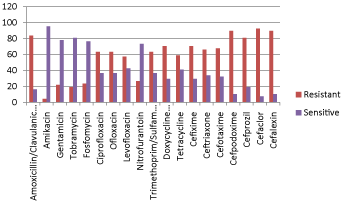
Figure 1: Pattern of Escherichia coli Resistant & Sensitive.

Figure 2: Pattern of Klebsiella pneumoniae Resistant & Sensitive.
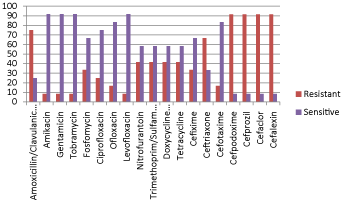
Figure 3: Pattern of Others Gram Negative Bacilli Resistant & Sensitive.
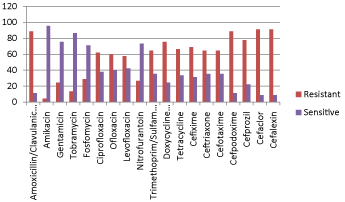
Figure 4: Pattern of Escherichia coli Resistant & Sensitive.
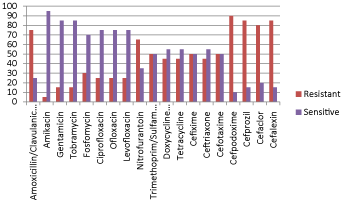
Figure 5: Pattern of Klebsiella pneumoniae Resistant & Sensitive.
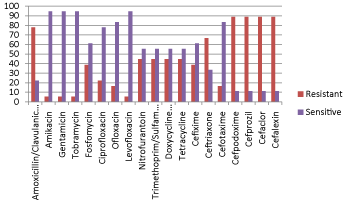
Figure 6: Pattern of Others Gram Negative Bacilli Resistant & Sensitive.
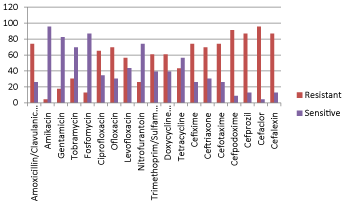
Figure 7: Pattern of Escherichia coli Resistant & Sensitive.
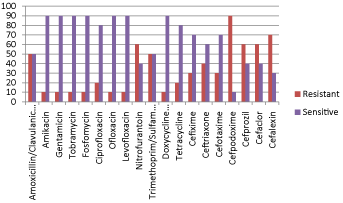
Figure 8: Pattern of Klebsiella pneumoniae Resistant & Sensitive.

Figure 9: Pattern of Others Gram Negative Bacilli Resistant & Sensitive.
Age Group
Total Population
Male child
Female child
1 to 12 years
512
276 (54.0%)
236 (46.0%)
1 to 5 years
312
170 (54.5%)
142 (45.5%)
>5 to 12 years
200
106 (53.0%)
94 (47.0%)
Table 2: Different age groups of total sample.
Age Group
Total Population
Positive culture
Negative culture
1 to 12 years
512
220 (42.9 %)
292 (57.0%)
1 to 5 years
312
148 (47.4%)
164 (52.6%)
>5 to 12 years
200
72 (36.0%)
128 (64.0%)
Table 3: Prevalence of UTI in different age groups.
Age Group
Total Population in Male child
Positive culture in
Male child
Total Population in Female child
Positive culture in Female child
1 to 12 years
276
104 (37.7%)
236
116 (49.2%)
1 to 5 years
170
74 (43.6%)
142
74 (52.2%)
>5 to 12 years
106
30 (28.3%)
94
42 (44.7%)
Table 4: Prevalence of UTI in different age groups with Male & Female child.
Pathogens
Male child [No: 104]
Female child [No.:116]
Esch. coli
52 (50.0%)
84 (72.4%)
Klebsiella pneumoniae
36 (34.6%)
24 (20.7%)
Others Gram Negative Bacilli
16 (15.4%)
8 (6.9%)
ESBL Stain
54 (52.0%)
68 (58.7%)
Table 5: Prevalence of pathogens isolated on urine culture with age group of 1 to 12 years.
Pathogens
Male child [No: 74]
Female child [No: 74]
Esch. coli
36 (48.6%)
54 (73.0%)
Klebsiella pneumoniae
26 (35.2%)
14 (18.9%)
Others Gram Negative Bacilli
12 (16.2%)
06 (8.1%)
ESBL Stain
40 (54.0%)
44 (59.5%)
Table 6: Prevalence of pathogens isolated on urine culture with age group of 1 to 5 years.
Pathogens
Male child [No: 30]
Female child [No: 42]
Esch. coli
16 (53.3%)
30 (71.4%)
Klebsiella pneumoniae
10 (33.3%)
10 (23.8%)
Others Gram Negative Bacilli
04 (13.4%)
02 (4.8%)
ESBL Stain
14 (46.7%)
24 (57.2%)
Children: 1 To 12 Years
Table 6: Prevalence of pathogens isolated on urine culture with age group of >5 to 12 years.
Discussion
Urinary tract infections which are more often seen in girls than boys are among frequently seen bacterial infections during pediatric age [21]. Community acquired urinary tract infections (UTI) cause significant illness in the first 2 years of life and is considered as common disease in school and pre-school children [22-24]. Urinary tract infection in children is a significant source of morbidity. It is generally agreed that children with UTI require further investigation and continuing urinary surveillance to minimize future complications.
Escherichia coli are the most common cause of urinary tract infection [25]. Other microorganisms include Klebsiella pneumoniae, Enterobacter aerogenes, Proteus spp., Citrobacter spp., Pseudomonas aerugenosa, Enterococcus faecalis [26-28]. Our findings are consistent with these reports. In our study confirmed Escherichia coli are major urinary pathogen and urinary tract infection was more common among females than male children.
A study by Bryce et al that reviewed studies investigating the prevalence of antibiotic resistance in UTI caused by Esch. coli in children found that the prevalence of resistance is high, particularly in countries outside the Organization for Economic Co-operation and Development (OECD). Resistance in countries outside the OECD was: 79.8% for ampicillin, 60.3% for co-amoxiclav, 26.8% for ciprofloxacin, and 17.0% for nitrofurantoin [29].
In a study of 607 children with reflux diagnosed by VCUG after a first or second UTI, the subjects were randomized to antibiotic prophylaxis with TMP-SMX or placebo. The risk of recurrences was reduced by 50% in the treatment group (hazard ratio, 0.50; 95% CI, 0.34-0.74). The risk of renal scarring overall did not differ significantly between the groups over 2 years. Also, the occurrence of a subsequent UTI with a TMP-SMX - resistant organism was significantly increased in the treatment group. The children enrolled were aged 2-71 months, a wider age range than the AAP guidelines currently encompass [30].
The Results of the present study indicate a high incidence of microbial resistance to commonly use of oral antibiotics of Amoxicillin/clavulanic acid, Co-trimoxazole, Cefixime, Cefpodoxime, Cefprozil, Cefalexin in urinary tract infections among children (Table 8 to 16) and suggest the physicians to be cautious about treatment with antibiotics. Knowledge of the local antibiotic resistance helps in guiding antibiotic choice (Table 17,18).
Total Isolates: 136
Antibiotics
R (No)
R (%)
S (No)
S (%)
Amoxicillin/Clavulanic acid
114
83.8
22
16.2
Amikacin
6
4.5
130
95.5
Gentamicin
30
22
106
78
Tobramycin
26
19.2
110
80.8
Fosfomycin
32
23.5
104
76.5
Ciprofloxacin
86
63.2
50
36.8
Ofloxacin
86
63.2
50
36.8
Levofloxacin
78
57.4
58
42.6
Nitrofurantoin
36
26.5
100
73.5
Trimethoprim/Sulfamethoxazole
86
63.2
50
36.8
Doxycycline Hydrochloride
96
70.5
40
29.5
Tetracycline
80
58.9
56
41.1
Cefixime
96
70.5
40
29.5
Ceftriaxone
90
66.1
46
33.9
Cefotaxime
92
67.6
44
32.4
Cefpodoxime
122
89.7
14
10.3
Cefprozil
110
80.8
26
19.2
Cefaclor
126
92.6
10
7.4
Cefalexin
122
89.8
14
10.2
Table 8: Percentage of Resistant & Susceptibility of isolated Escherichia coli to tested antibiotic.
Total Isolates: 60
Antibiotics
R (No)
R (%)
S (No)
S (%)
Amoxicillin/Clavulanic acid
40
66.7
20
33.3
Amikacin
4
6.6
56
93.4
Gentamicin
8
13.3
52
86.7
Tobramycin
8
13.3
52
86.7
Fosfomycin
14
23.3
46
76.7
Ciprofloxacin
14
23.3
46
76.7
Ofloxacin
12
20
48
80
Levofloxacin
12
20
48
80
Nitrofurantoin
38
63.3
22
36.7
Trimethoprim/Sulfamethoxazole
30
50
30
50
Doxycycline Hydrochloride
20
33.3
40
66.7
Tetracycline
22
36.7
38
63.3
Cefixime
26
43.3
34
56.7
Ceftriaxone
26
43.3
34
56.7
Cefotaxime
26
43.3
34
56.7
Cefpodoxime
54
90
6
10
Cefprozil
46
76.6
14
23.4
Cefaclor
44
73.3
16
26.7
Cefalexin
48
80
12
20
Table 9: Percentage of Resistant & Susceptibility of isolated Klebsiella pneumoniae to tested antibiotic.
Total Isolates: 24
Antibiotics
R (No)
R (%)
S (No)
S (%)
Amoxicillin/Clavulanic acid
18
75
6
25
Amikacin
2
8.3
22
91.7
Gentamicin
2
8.3
22
91.7
Tobramycin
2
8.3
22
91.7
Fosfomycin
8
33.4
16
66.6
Ciprofloxacin
6
25
18
75
Ofloxacin
4
16.7
20
83.3
Levofloxacin
2
8.3
22
91.7
Nitrofurantoin
10
41.7
14
58.3
Trimethoprim/Sulfamethoxazole
10
41.7
14
58.3
Doxycycline Hydrochloride
10
41.7
14
58.3
Tetracycline
10
41.7
14
58.3
Cefixime
8
33.4
16
66.6
Ceftriaxone
16
66.7
8
33.3
Cefotaxime
4
16.7
20
83.3
Cefpodoxime
22
91.6
2
8.4
Cefprozil
22
91.6
2
8.4
Cefaclor
22
91.6
2
8.4
Cefalexin
22
91.6
2
8.4
Category-I: Pre School Aged Children [1 To 5 Years]
Table 10: Percentage of Resistant & Susceptibility of isolated others Gram Negative Bacilli to tested antibiotic.
Total Isolates: 90
Antibiotics
R (No)
R (%)
S (No)
S (%)
Amoxicillin/Clavulanic acid
80
88.9
10
11.1
Amikacin
4
4.4
86
95.6
Gentamicin
22
24.5
68
75.5
Tobramycin
12
13.4
78
86.6
Fosfomycin
26
28.9
64
71.1
Ciprofloxacin
56
62.2
34
37.8
Ofloxacin
54
60
36
40
Levofloxacin
52
57.8
38
42.2
Nitrofurantoin
24
26.7
66
73.3
Trimethoprim/Sulfamethoxazole
58
64.4
32
35.6
Doxycycline Hydrochloride
68
75.5
22
24.5
Tetracycline
60
66.6
30
33.4
Cefixime
62
68.8
28
31.2
Ceftriaxone
58
64.5
32
35.5
Cefotaxime
58
64.5
32
35.5
Cefpodoxime
80
88.8
10
11.2
Cefprozil
70
77.8
20
22.2
Cefaclor
82
91.1
8
8.9
Cefalexin
82
91.1
8
8.9
Table 11: Percentage of Resistant & Susceptibility of isolated Escherichia coli to tested antibiotic.
Total Isolates : 40
Antibiotics
R (No)
R (%)
S (No)
S (%)
Amoxicillin/Clavulanic acid
30
75
10
25
Amikacin
2
5
38
95
Gentamicin
6
15
34
85
Tobramycin
6
15
34
85
Fosfomycin
12
30
28
70
Ciprofloxacin
10
25
30
75
Ofloxacin
10
25
30
75
Levofloxacin
10
25
30
75
Nitrofurantoin
26
65
14
35
Trimethoprim/Sulfamethoxazole
20
50
20
50
Doxycycline Hydrochloride
18
45
22
55
Tetracycline
18
45
22
55
Cefixime
20
50
20
50
Ceftriaxone
18
45
22
55
Cefotaxime
20
50
20
50
Cefpodoxime
36
90
4
10
Cefprozil
34
85
6
15
Cefaclor
32
80
8
20
Cefalexin
34
85
6
15
Table 12: Percentage of Resistant & Susceptibility of isolated Klebsiella pneumoniae to tested antibiotic.
Total Isolates: 18
Antibiotics
R (No)
R (%)
S (No)
S (%)
Amoxicillin/Clavulanic acid
14
77.8
4
22.2
Amikacin
1
5.5
17
94.5
Gentamicin
1
5.5
17
94.5
Tobramycin
1
5.5
17
94.5
Fosfomycin
7
38.8
11
61.2
Ciprofloxacin
4
22.2
14
77.8
Ofloxacin
3
16.6
15
83.4
Levofloxacin
1
5.5
17
94.5
Nitrofurantoin
8
44.5
10
55.5
Trimethoprim/Sulfamethoxazole
8
44.5
10
55.5
Doxycycline Hydrochloride
8
44.5
10
55.5
Tetracycline
8
44.5
10
55.5
Cefixime
7
38.8
11
61.2
Ceftriaxone
12
66.6
6
33.4
Cefotaxime
3
16.6
15
83.4
Cefpodoxime
16
88.8
2
11.2
Cefprozil
16
88.8
2
11.2
Cefaclor
16
88.8
2
11.2
Cefalexin
16
88.8
2
11.2
Category-II: School Aged Children [>5 To 12 Years]
Table 13: Percentage of Resistant & Susceptibility of isolated others Gram Negative Bacilli to tested antibiotic.
Total Isolates: 46
Antibiotics
R (No)
R (%)
S (No)
S (%)
Amoxicillin/Clavulanic acid
34
74
12
26
Amikacin
2
4.3
44
95.7
Gentamicin
8
17.4
38
82.6
Tobramycin
14
30.5
32
69.5
Fosfomycin
6
13
40
87
Ciprofloxacin
30
65.3
16
34.7
Ofloxacin
32
69.5
14
30.5
Levofloxacin
26
56.5
20
43.5
Nitrofurantoin
12
26
34
74
Trimethoprim/Sulfamethoxazole
28
60.8
18
39.2
Doxycycline Hydrochloride
28
60.8
18
39.2
Tetracycline
20
43.4
26
56.6
Cefixime
34
74
12
26
Ceftriaxone
32
69.5
14
30.5
Cefotaxime
34
74
12
26
Cefpodoxime
42
91.3
4
8.7
Cefprozil
40
87
6
13
Cefaclor
44
95.7
2
4.3
Cefalexin
40
87
6
13
Table 14: Percentage of Resistant & Susceptibility of isolated Escherichia coli to tested antibiotic.
Total Isolates: 20
Antibiotics
R (No)
R (%)
S (No)
S (%)
Amoxicillin/Clavulanic acid
10
50.0
10
50.0
Amikacin
02
10.0
18
90.0
Gentamicin
02
10.0
18
90.0
Tobramycin
02
10.0
18
90.0
Fosfomycin
02
10.0
18
90.0
Ciprofloxacin
04
20.0
16
80.0
Ofloxacin
02
10.0
18
90.0
Levofloxacin
02
10.0
18
90.0
Nitrofurantoin
12
60.0
08
40.0
Trimethoprim/Sulfamethoxazole
10
50.0
10
50.0
Doxycycline Hydrochloride
02
10.0
18
90.0
Tetracycline
04
20.0
16
80.0
Cefixime
06
30.0
13
70.0
Ceftriaxone
08
40.0
12
60.0
Cefotaxime
06
30.0
14
70.0
Cefpodoxime
18
90.0
02
10.0
Cefprozil
12
60.0
08
40.0
Cefaclor
12
60.0
08
40.0
Cefalexin
14
70.0
06
30.0
Table 15: Percentage of Resistant & Susceptibility of isolated Klebsiella pneumoniae to tested antibiotic.
Total Isolates: 06
Antibiotics
R (No)
R (%)
S (No)
S (%)
Amoxicillin/Clavulanic acid
4
66.6
2
33.4
Amikacin
1
16.6
5
83.4
Gentamicin
1
16.6
5
83.4
Tobramycin
1
16.6
5
83.4
Fosfomycin
1
16.6
5
83.4
Ciprofloxacin
2
33.3
4
66.7
Ofloxacin
1
16.6
5
83.4
Levofloxacin
1
16.6
5
83.4
Nitrofurantoin
2
33.3
4
66.7
Trimethoprim/Sulfamethoxazole
2
33.3
4
66.7
Doxycycline Hydrochloride
2
33.3
4
66.7
Tetracycline
2
33.3
4
66.7
Cefixime
1
16.6
5
83.4
Ceftriaxone
4
66.6
2
33.4
Cefotaxime
1
16.6
5
83.4
Cefpodoxime
5
83.3
1
16.7
Cefprozil
5
83.3
1
16.7
Cefaclor
5
83.3
1
16.7
Cefalexin
5
83.3
1
16.7
Table 16: Percentage of Resistant & Susceptibility of isolated others Gram Negative Bacilli to tested antibiotic.
Antibiotic resistance is one of the world’s most pressing public health problems. The antibiotic resistant organisms can quickly spread and so threaten communities with new strains of infectious disease that are more difficult to cure and more expensive to treat. Treatment failures may arise due to the resistance offered by pathogen against effective broad spectrum antibiotics. These treatment failures and hard to treat infections may results in high death rates [31].
Extended-spectrum beta-lactamases (ESBL) are enzymes that confer resistance to most beta-lactam antibiotics, including penicillins, cephalosporins, and the monobactam aztreonam. Infections with ESBL-producing organisms have been associated with poor outcomes. Community and hospital-acquired ESBLproducing Enterobacteriaceae are prevalent worldwide [32]. Reliable identification of ESBL-producing organisms in clinical laboratories can be challenging, so their prevalence is likely underestimated. Carbapenems are the best antimicrobial agent for infections caused by such organisms.
Beta-lactamases are enzymes that open the beta-lactam ring, inactivating the antibiotic. The first plasmid-mediated beta-lactamase in gram-negative bacteria was discovered in Greece in the 1960s. It was named TEM after the patient from whom it was isolated (Temoniera) [33]. Subsequently, a closely related enzyme was discovered and named TEM-2. It was identical in biochemical properties to the more common TEM-1 but differed by a single amino acid with a resulting change in the isoelectric point of the enzyme.
These two enzymes are the most common plasmid-mediated betalactamases in gram-negative bacteria, including Enterobacteriaceae, Pseudomonas aeruginosa, Haemophilus influenzae, and Neisseria gonorrhoeae. TEM-1 and TEM-2 hydrolyze penicillins and narrow spectrum cephalosporins, such as cephalothin or cefazolin. However, they are not effective against higher generation cephalosporins with an oxyimino side chain, such as cefotaxime, ceftazidime, ceftriaxone, or cefepime. Consequently, when these antibiotics were first introduced, they were effective against a broad group of otherwise resistant bacteria. A related but less common enzyme was termed SHV, because sulfhydryl reagents had a variable effect on substrate specificity.
Antibiotic resistance is an important issue affecting public health, and rapid detection in clinical laboratories is essential for the prompt recognition of antimicrobial-resistant organisms. Infectioncontrol practitioners and clinicians need the clinical laboratory to rapidly identify and characterize different types of resistant bacteria efficiently to minimize the spread of these bacteria and help to select more appropriate antibiotics. This is particularly true for ESBLproducing bacteria. The epidemiology of ESBL-producing bacteria is becoming more complex with increasingly blurred boundaries between hospitals and the community. Esch. coli that produce CTX-M β-lactamases seem to be true community ESBL producers with different behaviors from Klebsiella spp., which produce TEMderived and SHV-derived ESBLs. These bacteria have become widely prevalent in the community setting in certain areas of the world and they are most likely being imported into the hospital setting. A recent trend is the emergence of community-onset bloodstream infections caused by ESBL-producing bacteria, especially CTX-M-producing Esch. coli. These infections are currently rare, but it is possible that, in the near future, clinicians will be regularly confronted with hospital types of bacteria causing infections in patients from the community. β-lactums contribute a measure class of safer antibiotics. They are widely used as broad spectrum antibiotics for all the type of infections. New generation of antibiotics is predominantly preferred in clinical use. Many more new β- lactums are expected for the clinical use and many new β- lactums are expected in future. There is a better scope, prosperity for the discovery and development of new and safer β- lactums. The structure of β- lactams, their nature, classification, chemistry to be well studied. β- lactums, their mode of action, their bactericidal properties and their future growth is seen with new hopes. In this study, in the age group of 1 to 5 years, ESBL were detected in 54.0% in male child & 59.5% in female child and the age group of >5 to 12 years, ESBL were detected in 46.7% in male child and 57.2% in female child.
Nursing-home patients may be an important reservoir of ESBLproducing multidrug-resistant Escherichia coli and K. pneumoniae [34-36]. In our study, resistance to more than one antibiotic was rather common and the spread of ESBL-producing isolates was quite alarming. The resistance rate to fluoroquinolones observed in this study was quite high, particularly in Esch. coli, and poses some concerns about their use in empirical treatment of UTIs. Resistance to fluoroquinolones is known to be associated with the previous use of antibiotics, particularly fluoroquinolones, and previous reports have demonstrated that underlying urinary tract diseases predispose patients to repeated UTIs and, in turn, to exposure to antibiotics such as fluoroquinolones [37-39].
This study clearly demonstrates the development of resistance for commonly use antibiotics in children UTI. Different factors are attributable for emergence of resistance mainly include; high consumption of antibiotics, irrational use, incomplete course of therapy, and self-medication by patients, leading to the emergence of resistance and even treatment failures. One major cause of selfmedication is poverty. India is an under developed country, people are used to treating themselves without obtaining prescriptions from physicians. The present situation is alarming, because it is not long before common antibiotics, an effective antibiotic would be failed to treat even simple or minor infections. Curtailed follow up of regimen also creates resistance. Generally patients stop their treatment when they feel slight improvement and the microorganisms start adapting the environment rather than get killed. Governments must initiates different educational programs, seminars, workshops in collaboration with the media to make people aware of the consequences of selfmedication, especially with broad- spectrum antibiotics. In addition to this, routine antimicrobial susceptibility testing must be timely performed to determine the current status of resistance against antimicrobial agents (MIC, E test, Disk diffusion method). Otherwise therapy failures may occur which increase the cost of the therapy as well as recovery time from the underlying disease.
Conclusion
In conclusion, it is important that each country should have its own epidemiological data, and physicians should know antimicrobial resistance rates in their regions so as to arrange treatment, and prophylaxis accordingly. Antimicrobial resistance rates are increasing steadily against antibiotics expected to exert clinical efficacy in the treatment of UTI as a result of their widespread, and erroneous use. We think that at certain intervals centers should identify urinary pathogens prevalent in their regions, and aware of antimicrobial susceptibilities of these pathogens which are very important for the economy of the country, and appropriate treatment.
Antimicrobial resistance is a globally ever increasing problem. The emergence and spread of antimicrobial resistance are complex and driven by numerous interconnected factors. The principle causes of microbial resistance are inappropriate, irrational, high consumption, and profligate use of antibiotics. The use of antimicrobials must be restricted and monitored in order to decline the resistance. The present results in increasing antibiotic resistance trends in UTI patients in children indicate that it is imperative to rationalize the use of antimicrobials and to use these conservatively. Considering the relatively increase rates of UTI and drug resistance observed in this study, continued local, regional, and national surveillance is warranted. Antibiotics should only be issued when prescribed by physicians.
Antibiotic resistance is a growing problem in pediatric urology as highlighted by the significantly increased urinary pathogen resistance to commonly use of oral antibiotics. Poor empiric prescribing practices, lack of urine testing, and nonselective use of prophylaxis exacerbate this problem. However, three small changes in practice patterns may curb the growing resistance rates: use of urine testing in order to only treat when indicated and tailor broad-spectrum therapy as able; selective application of antibiotic prophylaxis to patients; and use of local antiobiograms, particularly pediatric-specific antiobiograms, with inpatient versus outpatient data.
This study will provide novel, clinically important information on the diagnostic features of childhood UTI and the cost effectiveness of a validated prediction rule, to help primary care clinicians improve the efficiency of their diagnostic strategy for UTI in children. Regular monitoring is required to establish reliable information about resistance pattern of urinary pathogens for optimal empirical therapy of patients with UTIs. Finally, we suggest that empirical antibiotic selection should be based on the knowledge of local prevalence of bacterial organisms and antibiotic sensitivities rather than on universal guidelines.
Acknowledgements
I would like to thank DR. (MRS.) HIMANSHU of the Department of Microbiology, OPJS University; Churu; Rajasthan; India for critical review of the manuscript and suggestions. I express my sincere thanks to Managing Director of Serum Analysis Centre Pvt. Ltd. Howrah-711101, West Bengal, India for granting me permission to work in the department and extending all facilities available.
References
- Larcombe J. Urinary tract infection in children. BMJ. 1999; 319: 1173-1175.
- Shaw KN, Gorelick M, McGowan KL, Yakscoe NM, Schwartz JS. Prevalence of urinary tract infection in febrile young children in the emergency department. Pediatrics. 1998; 102: 16.
- Bachur R, Harper MB. Reliability of the urinalysis for predicting urinary tract infections in young febrile children. Arch Pediatric Adolesc Med. 2001; 155: 60-65.
- Twaij M. Urinary tract infection in children: A review of its pathogenesis and risk factors. J R Soc Health. 2000; 120: 220-226
- Naber KG, Schito G, Botto H, Palou J, Mazzei T. Surveillance study in Europe and Brazil on clinical aspects and antimicrobial resistance epidemiology in females with cystitis (ARESC): Implications for empiric therapy. Eur. Urol. 2008; 54: 1164-1178.
- Tandogdu Z, Cek M, Wagenlehner F, Naber K, Tenke P, van Ostrum E, et al. Resistance patterns of nosocomial urinary tract infections in urology departments: 8-Year results of the global prevalence of infections in urology study. World J. Urol. 2014; 32: 791-801.
- Wagenlehner FME, van Oostrum E, Tenke P, Tandogdu Z, Cek M, Grabe M, et al. Infective complications after prostate biopsy: Outcome of the Global Prevalence Study of Infections in Urology (GPIU) 2010 and 2011. A prospective multinational multicentre prostate biopsy study. Eur. Urol. 2013; 63: 521-527.
- Wagenlehner FME, Naber KG. Asymptomatic bacteriuria-Shift of paradigm. Clin. Infect. Dis. 2012; 55: 778-780.
- Magiorakos AP, Srinivasan A, Carey B, Carmeli Y, Falagas ME, Giske CG, et al. Multidrug-resistant, extensively drug-resistant and pandrug-resistant bacteria: An international expert proposal for interim standard definitions for acquired resistance. Clin. Microbiol. Infect. 2012; 18: 268-281.
- Zorc JJ, Kiddoo DA, Shaw KN. Diagnosis and management of pediatric urinary tract infections. Clin Microbiol Rev. 2005; 18: 417-422.
- Turnidge J, Bell J, Biedenbach DJ, Jones RN. Pathogen occurrence and antimicrobial resistance trends among urinary tract infection isolates in the Asia-Western Pacific Region: report from the SENTRY Antimicrobial Surveillance Program, 1998-1999. Int J Antimicrob Agents. 2002; 20: 10-17.
- Zhanel GG, Karlowsky JA, Schwartz B, Jensen SB, Hoban DJ. Mecillinam activity compared to ampicillin, trimethoprim/sulfamethoxazole ciprofloxacin and nitrofurantoin against urinary tract isolates of Gram negative bacilli. Chemotherapy. 1998; 44: 391-396.
- Bahram F, Farhad H, Mohammad E, Marzieh A, Farrokh A, Bahram K. Detection of vancomycin resistant enterococci (vre) isolated from urinary tract infections (UTI) in Tehran. Iran. Daru. 2006; 14: 141-145.
- Collee JG, Duguid JP, Fraser AG, Marmion BP, Simmons A. Laboratory strategy in diagnosis of infective syndromes. In: Collee JG, Duguid JP, Fraser AG, Marmion BP, Simmons A (Editor). Mackie and McCartney Practical Medical Microbiology, 14th ed. London: Churchill Livingstone. 1996: 53-94.
- Cruickshank R, Duguid JP, Marmion BP. Tests for identification of bacteria. In: Medical Microbiology. 12th ed. London: Churchill Livingstone. 1975: 170- 189.
- Kass EH. Bacteriuria and diagnosis of infections of urinary tract. Arch. Intern. Med. 1957; 100: 709-714.
- District laboratory Practice in Tropical Countries Monika Cheesbrough. 2nd Edition, Part-2, Cambridge University Press. 2002: 132-234.
- Bauer AW, Kirby WM, Sherris JC, Turck M. Antibiotic susceptibility testing by a standardized single disk method. Am. J. Clin. Pathol. 1966; 45: 493-496.
- CLSI. Methods for Dilution Antimicrobial Susceptibility Tests for Bacteria that Grow aerobically, 8th edn. Approved Standard M07-A8. Wayne, PA: Clinical and Laboratory Standards Institute. 2009.
- CLSI. Performance Standards for Antimicrobial Susceptibility Testing, 20th Informational Supplement M100-S20. Wayne. PA: Clinical and Laboratory Standards Institute. 2009.
- Rushton HG. Urinary tract infections in children. Epidemiology, evaluation and management. Pediatric Clin North Am. 1997; 44: 1133-1169.
- Schlager T. Urinary tract infections in infants and children. Infect Dis Clin North Am. 2003; 17: 353-365.
- Wald ER. Cystitis and pyelonephritis. In: Feigin RD, Chery JD, Demmier GJ, Kapian SL, eds. Textbook of Pediatric Infectious Diseases, 5th edn, Philadelphia: Saunders. 2004: 541-553.
- Fallahzadeh MH, Alamdarlu HM. Prevalence of urinary tract infection in preschool febrile children. Iranian J of Med Sci. 1999; 24: 35-39
- Esmaeili M. Antibiotics for causative microorganisms of urinary tract infections. Iranian Journal of Pediatric infection. 2005; 15: 165-173.
- Fluit C, Mark J, Franz-Josef S, Jacques A, Renu G, Verhoef J. Antimicrobial resistance among urinary tract infection (UTI) isolates in Europe: Results from the SENTRY Antimicrobial Surveillance Program 1997. Antonie Van Leeuwenhoek. 2000; 77: 147-152.
- Jalali M, Asteraki T, Emami-Moghadam E, Kalantar E. Epidemiological study of asymptomatic bacteriuria among nursery school children in Ahwaz, Iran. Afr J Clin Expt Microbiol. 2005; 6: 159-161.
- Esmaeili M. Antibiotics for causative microorganisms of urinary tract infections. Journal of Iranian Pediatric Disease. 2005; 15: 165-173.
- Bryce A, Hay AJ, Lane I. Global prevalence of antibiotic resistance in pediatric urinary tract infections caused by Escherichia coli and association with routine use of antibiotics in primary care: Systematic review and metaanalysis. BMJ. 2016; 352: 939.
- The RIVUR Trial Investigators. Antimicrobial Prophylaxis for Children with Vesicoureteral Reflux. N Engl J Med. 2014.
- Khushal R. Prevalence, characterization and development of resistance pattern in indigenous clinical isolates against cephalosporins. Ph. D Thesis. Department of Biological Sciences/ Quaid-i-Azam University, Islambad, Pakistan. 2004: 1-10.
- Ben-Ami R, Rodríguez-Ba&nTilde;o J, Arslan H. A multinational survey of risk factors for infection with extended-spectrum beta-lactamase-producing enterobacteriaceae in nonhospitalized patients. Clin Infect Dis. 2009; 49: 682-690.
- Bradford PA. Extended-spectrum beta-lactamases in the 21st century: characterization, epidemiology, and detection of this important resistance threat. Clin Microbiol Rev. 2001; 14: 933-951.
- Wiener J, Quinn JP, Bradford PA, Goering RV, Nathan C, Bush K, et al. Multiple antibiotic-resistant Klebsiella spp. and Escherichia coli in nursing homes. JAMA. 1999; 281: 517- 523.
- Das R, Perrelli E, Towle V, Van Ness PH & Juthani-Mehta M. Antimicrobial susceptibility of bacteria isolated from urine samples obtained from nursing home residents. Infect Control Hosp Epidemiol. 2009; 30: 1116-1119.
- Nicolle LE. Antimicrobial resistance in long-term care facilities. Future Microbiol. 2012; 7: 171-174.
- Miliani K, L’He ´riteau F, Lacave L, Carbonne A, Astagneau P. Antimicrobial Surveillance Network Study Group. Imipenem and ciprofloxacin consumption as factors associated with high incidence rates of resistant Pseudomonas aeruginosa in hospitals in northern France. J Hosp Infect. 2011; 77: 343-347.
- Yasufuku T, Shigemura K, Shirakawa T, Matsumoto M, Nakano Y, Tanaka K, et al. Correlation of over expression of efflux pump genes with antibiotic resistance in Escherichia coli strains clinically isolated from urinary tract infection patients. J Clin Microbiol. 2011; 49: 189-194.
- Smithson A, Chico C, Ramos J, Netto C, Sanchez M, Ruiz J, et al. Prevalence and risk factors for quinolone resistance among Escherichia coli strains isolated from males with community febrile urinary tract infection. Eur J Clin Microbiol Infect Dis. 2012; 31: 423-430.